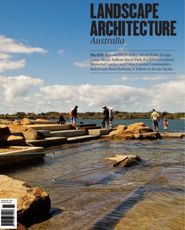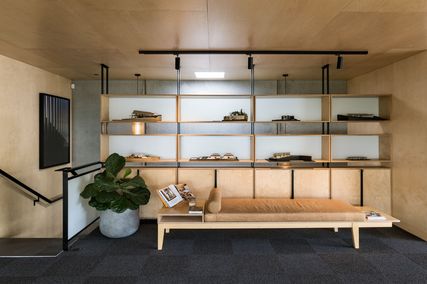
Niall Simpson, AILA national president.
per·spec·tive n
- a particular evaluation of a situation or facts, especially from one person’s point of view
- a measured or objective assessment of a situation, giving all elements their comparative importance
- the appearance of objects to an observer allowing for the effect of their distance from the observer
- the theory or practice of allowing for artistic perspective when drawing or painting
- a vista or view
Encarta World English Dictionary, Microsoft Corporation, 1999.
The common theme of the above definitions seems to be view/appearance and assessment/evaluation. My own perspective at the moment is crabby.
It appears that I am being affected by development (now that’s an interesting word) – albeit amateur – on neighbouring land. You will probably think I am being precious and suffering NIMBY (Not in My Back Yard) syndrome. But it is my perspective that is being affected.
The root of the issue is that I have difficulty accepting land as a commodity to be bought and sold like gold. But I do think that land is like gold – it is precious and it is finite – and like most things I believe in, fit for purpose.
I attempted to buy the aforementioned land at one point, but the wife of the owner (a farmer who died and whose family only wanted the cash) wasn’t prepared to sell me the bit on my side of the road. The 1:25,000s maps showed a couple of old titles; I said I was willing to do the legwork. She said it would make an unviable farm and that the council wouldn’t let me do it anyway. Ironic. So I left it at that, comforted by a vague thought that that was it.
Well, the new owner was able to subdivide by resurrecting old titles, without any advertising, and rush it through the planning process before the PAL (Protecting Agricultural Land) policy was enacted – all despite his assurances that he was going to move there to live and send his children to the local school. That didn’t happen, and he now aims to make a million so he can retire, all at the expense of the landscape. While I freely admit to naivety, this experience has changed my perspective.
Another half a dozen or so houses may not count as urbanization to you, but to me it feels like the end of the world. This valley is my home, it is where my heart is.
My area is not prime agricultural land but it has consistently raised good, fat lambs. Because it is not Class 1 land (only highly productive soils used for vegetable growing) it is not considered valuable in planning terms. The Class 1 designation ignores the many productive land systems and any inherent land capacity.
There are so many zones for residential, commercial and industrial land, but only one for rural – that rather large area which gets referred to as “the landscape” – which among other things creates that sense of place for all settlements. It has a huge cognitive ownership.
The lack of zoning and understanding of lands value for rural land is a very real problem, and an insidious one. To me, Australia has always been about the dynamic of a vast country bolstering a dense urban fringe. This fringe is now seeping into and diluting this essence, diluting a landscape that can be amazingly productive, not only in the pure “bags to the acre” sense but in terms of tourism, recreation, health and ecosystems. With this shift in dynamic comes a shift in our identity, and the loss of the romantic notion of “a sunburnt country.” Our interventions need to respect the land, or we are all just developers, not stewards.
What really annoys me is that next-door project could have been done so much better with respect to planning, landscape and architecture. There is just no bloody design. How can you design a home without a client?
We need to maintain diversity in our productive land systems. The “supermarket” model has economies of scale but I feel it does not provide the best sustainable solution for a productive landscape. Small holdings can contribute, and in fact are an integral part of achieving a productive landscape, but guidance or a framework is needed. Current planning practice appears to me to focus on a limited land-use zoning palette with no connection or understanding of landscape’s true value.
Who is the steward of rural areas? Is it planning, is it design, is it governance? Combine all of these, and I think you are getting close to integrated design.
How do we make this leap to a cohesive response to the stewardship of the landscape, and how do we plan with real values and achieve integrated design thinking to achieve outcomes that provide fertile ground for sustainable settlements? I guess perspective changes as one’s viewpoint changes.
Source

Archive
Published online: 1 Feb 2012
Words:
Niall Simpson
Issue
Landscape Architecture Australia, February 2012














